The 2012 iPad Followup: Galaxy Tab 10.1 LTE Comparison
by Anand Lal Shimpi on April 2, 2012 8:01 PM ESTAs with all things in life, the job of reviewing a product spans a spectrum of options. At one end of the spectrum you have the quick hands on preview that masquerades itself as a review. At the other end you have the long term road test, spanning months of usage and truly addressing what the product is like to live with. Balancing needs on both ends of the spectrum is very difficult. Go too far to one side and you end up with nothing more than press release talking points. Go too far to the other and you end up with a review that’s potentially irrelevant by the time it’s published. My goal is to always strike a balance in delivering something deep that’s timely as well. Usually it comes at the expense of sleep, seeing as how there are a finite number of hours in a day.
Our recent review of the new iPad went into great detail on a number of topics – ranging from the display to the SoC, as well as discussing usability. I’ve got another post that I’ll do to talk about some findings on the usability side, but today I want to focus on something I left out of the original review: a comparison to Samsung’s Galaxy Tab 10.1 LTE. In the interest of not taking even longer to get the iPad review out, I trimmed the comparison points down to ASUS’ Transformer Prime and Motorola’s Xyboard for battery life and performance. As newer tablets, and with the TF Prime’s position as our favorite Android tablet, the comparison made sense. As many of you pointed out however, the Galaxy Tab 10.1 is also offered in an LTE flavor and would have made a great comparison. Before the TF Prime, there was the Galaxy Tab 10.1 and it was our most desired Android tablet for a while.
The Display
The Galaxy Tab 10.1 LTE uses Samsung’s own 1280 x 800 Super PLS display, which a year ago we loved. How does it stack up to the iPad’s Retina Display? In brightness and contrast it’s definitely competitive:
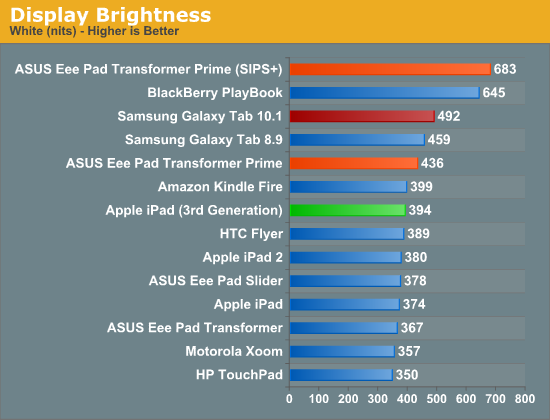
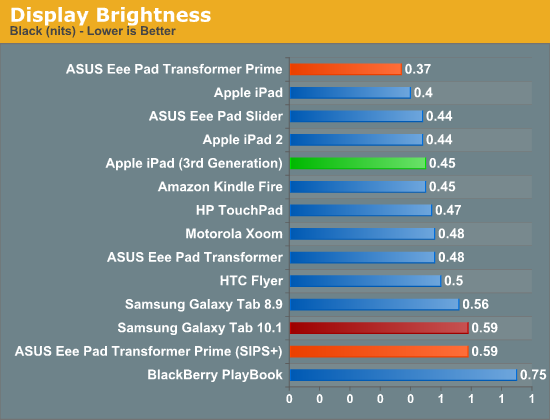
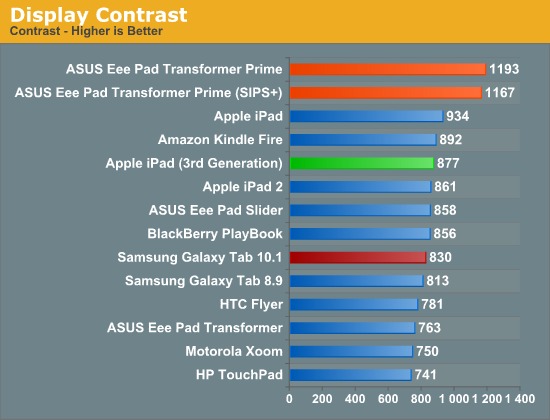
However once you start looking at color quality and gamut, the Galaxy Tab falls in line with the old standard. Samsung delivers similar a similar color gamut percentage to the iPad 2’s display, but the coverage area is different as you can see in the gallery below.
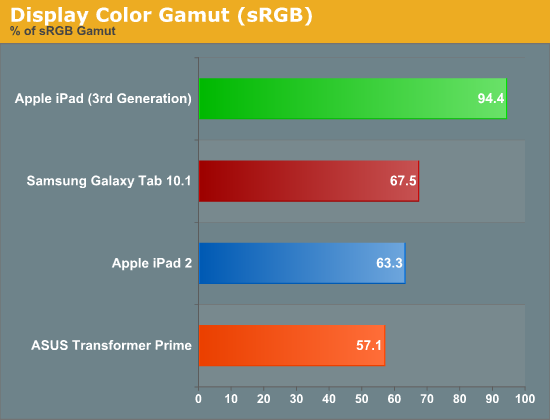
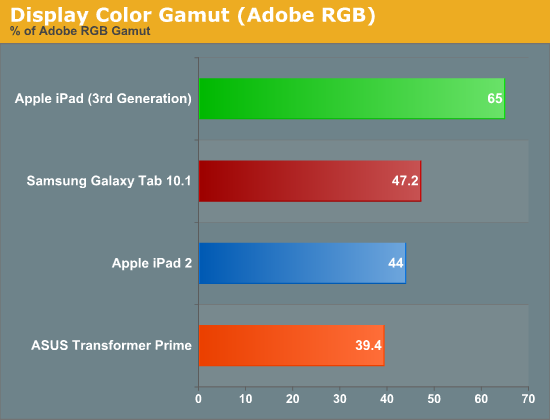
Both are short of the new iPad’s nearly full coverage of the sRGB space.
The delta E values echo what our CIE charts tell us, color and grayscale accuracy is simply better on the new iPad:
Note that ASUS’ TF Prime actually does better in the grayscale dE tests than the iPad. Apple may have raised the bar, but we’re still not anywhere close to perfection here.
Once again we have shots, taken at the same magnification, of the subpixel structure of all of these displays in order of increasing pixel density:
![]()
Apple iPad 2, 1024 x 768, 9.7-inches
![]()
ASUS Eee Pad Transformer Prime, 1280 x 800, 10.1-inches

Samsung Galaxy Tab 10.1, 1280 x 800, 10.1-inches
![]()
Apple iPad Retina Display (2012), 2048 x 1536, 9.7-inches
![]()
Apple iPhone 4S, 960 x 640, 3.5-inches
Performance
The Galaxy Tab 10.1 takes us back to a time when NVIDIA’s Tegra 2 was king. It was just a year ago that this was true. OMAP 4 was late, Tegra 3 was an eternity away and no one else had a dual-core Cortex A9 based SoC in shipping products. Unfortunately, by today’s standards, Tegra 2 is pretty slow. Not so much on the CPU side, but on the GPU side. Tegra 2 lacked the extra compute and efficiency improvements needed to really drive a 1280 x 800 display. Couple that with the bloat from Samsung’s TouchWiz update to Honeycomb and you don’t get a very smooth experience on the Galaxy Tab 10.1, especially compared to ASUS’ ICS enabled, Tegra 3 equipped Transformer Prime.
The GPU performance numbers support our subjective findings (more numbers here):
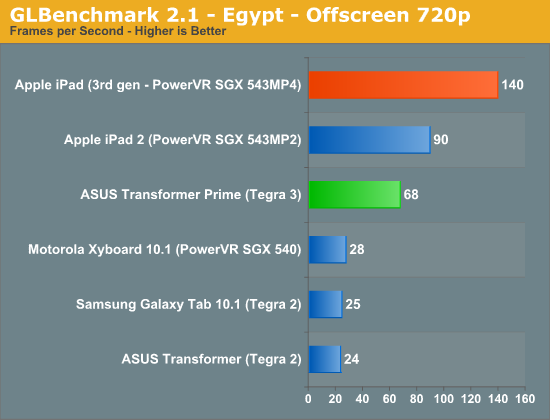
In our iPad review I talked about the gaming experience on Tegra 3 being pretty good using Tegra Zone titles. In fact, if a game is available for both iOS and Tegra Zone, the Tegra version typically looks better thanks to NVIDIA’s investment of additional developer resources for the title. Despite the visual gap, both platforms tend to offer good gaming experiences. The iOS app store is easier to navigate and compatibility with devices is less of a concern there, but developers on both sides of the fence try to deliver a ~30 fps experience regardless of platform. The Tegra 2 experience isn’t bad, but you do have to run games like GTA3 at lower quality settings to get similar frame rates to Tegra 3.
Battery Life
The iPad’s gigantic battery allowed it to last a bit longer on LTE than Motorola’s Xyboard 10.1, but what about compared to the Galaxy Tab 10.1? On LTE the Galaxy Tab 10.1 doesn’t fare as well as the Xyboard:
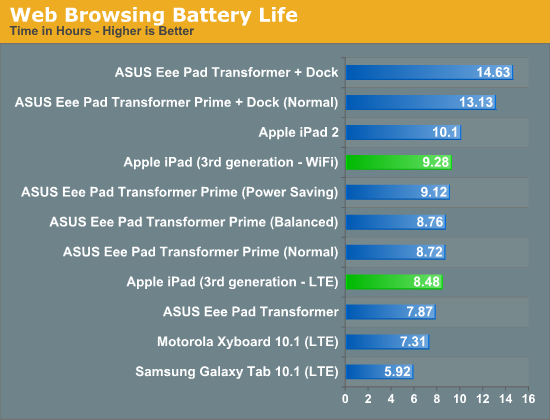
A few of you asked about video playback battery life of the new iPad. Using our old 720p, no-bframes test I managed 10.02 hours on the new iPad – tangibly less than the iPad 2 but above what Apple claims you should expect from the new tablet. I need to put together a 1080p, high profile video playback test now that more tablets can play higher quality streams. Perhaps I’ll do that in preparation for the TF700 review...
Final Words
Ask and you shall receive (time permitting). For those of you who asked, I hope the data shared here is what you were looking for. I've updated our original iPad review with all of this data as well. In short, the Galaxy Tab 10.1 LTE is a useful but not dramatically different comparison point from the Android camp. In the near term, ASUS' Transformer Pad Infinity is what I'm hoping will be some better competition.
On to the next one…


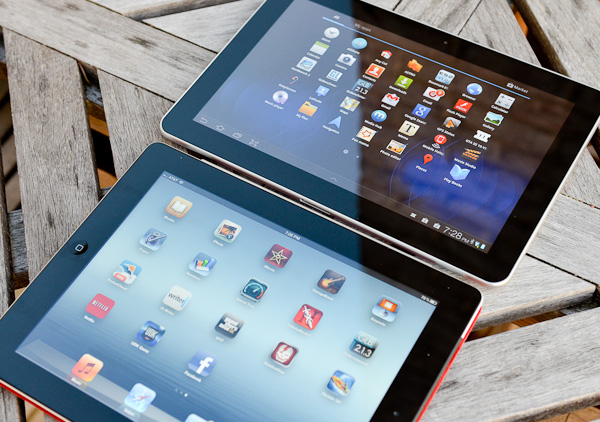






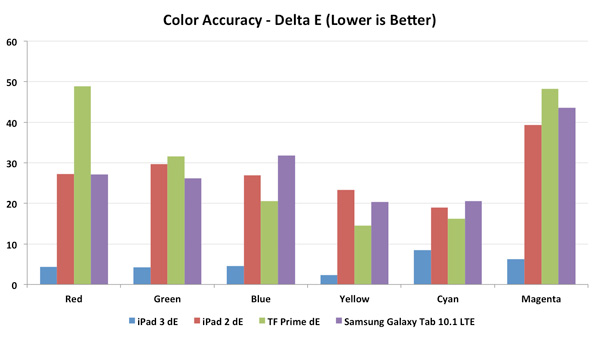
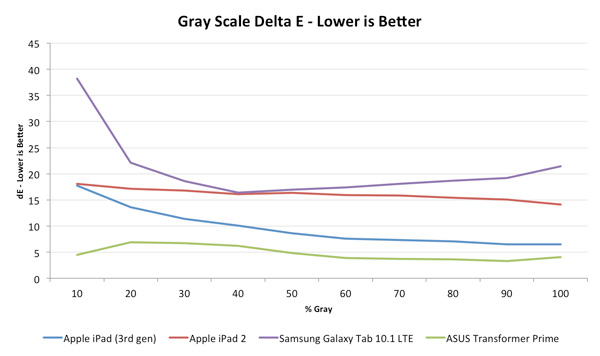
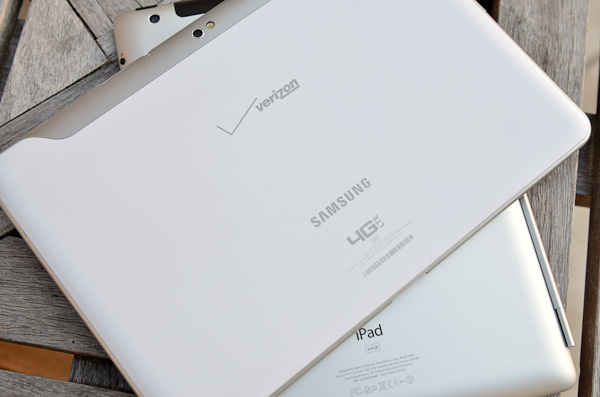








52 Comments
View All Comments
MonkeyPaw - Monday, April 2, 2012 - link
I figured this was going to be about the LTE speeds you were seeing from each (antenna strength, chipset speeds, etc), or was that in the bigger iPad review?SilthDraeth - Monday, April 2, 2012 - link
I know.jap0nes - Monday, April 2, 2012 - link
In other sites' comparisons I usually see the two competitors highlighted in the graphs, not just one.UltraTech79 - Saturday, April 7, 2012 - link
Seriously?People will find anything to bitch about.
deputc26 - Monday, April 2, 2012 - link
thanks for the extra info!ol1bit - Monday, April 2, 2012 - link
What can I say?I love my transformer primer that I bought after the ipad3 came out. For me is was really about open os, open hardware or the closed world of IOS.
For Android there are ways to tether.\, plus I get an awesome keyboard, micro-sd, Bluetooth for ps3 or 360 game controller. the Tegra 3 GFX rock!
It doesn't get hot, and 1280x800 is very nice. No blurriness my poor old eyes can see. I usually have to zoom up anyway.
ICS rocks as well.
inplainview - Tuesday, April 3, 2012 - link
Happy for you...enealDC - Tuesday, April 3, 2012 - link
I agree with you. I debated buying the Prime or the 2012 iPAD and the for me it simply came down to freedom. Even though I was absolutely amazed with display of the 2012 iPAD, I love the freedom that I have with Android. I'm a tinkerer and the ability to play with my device at a level beyond just playing games, or watching movies is essential for me. I don't want to be forced into a requirement of requiring anything other than proper drivers for connecting to and managing my device (specifically talking about Itunes here).Of course Android is like the wild wild west when it comes to apps though. Trying to navigate that landscape and get the best app for the job can be a bit tricky at times. And app makers have a tough time supporting it simply because of the myriad of distinct hardware and OS versions. As an example, the HBO GO app is not supported on the TP running ICS :( ) As another example, when I owned the Galaxy Tab 10.1, I tried getting some my HD anime to play on it and had a horrible experience using the built in video player. Then a buddy of mine's told me to check out Dice Player which played the same video on the same hardware with no issues.
So some ecosystem issues really need to be sorted out to make it really competitive to the iPAD..
steven75 - Tuesday, April 3, 2012 - link
That's great that you like your hardware that has a worse screen, worse GPU, and worse battery life, but what do you DO with it? I mean, we all know there are still basically no decent Android tablet apps.ol1bit - Tuesday, April 3, 2012 - link
Steven25,See Anandtechs review of the new iPad. Terga 3 is not slow, nor worse battery life. And the screen is good, better that most tablets at 1280x800. So far I love it, comics, magazines, games. And the Games are good. meany Tegra 3 enhanced. I can play Shadow gun and other games though HDMI in 3D on my 3d Tv at home in!
It is a great tablet, So when you say Android tablet are not decent, I don't understand.